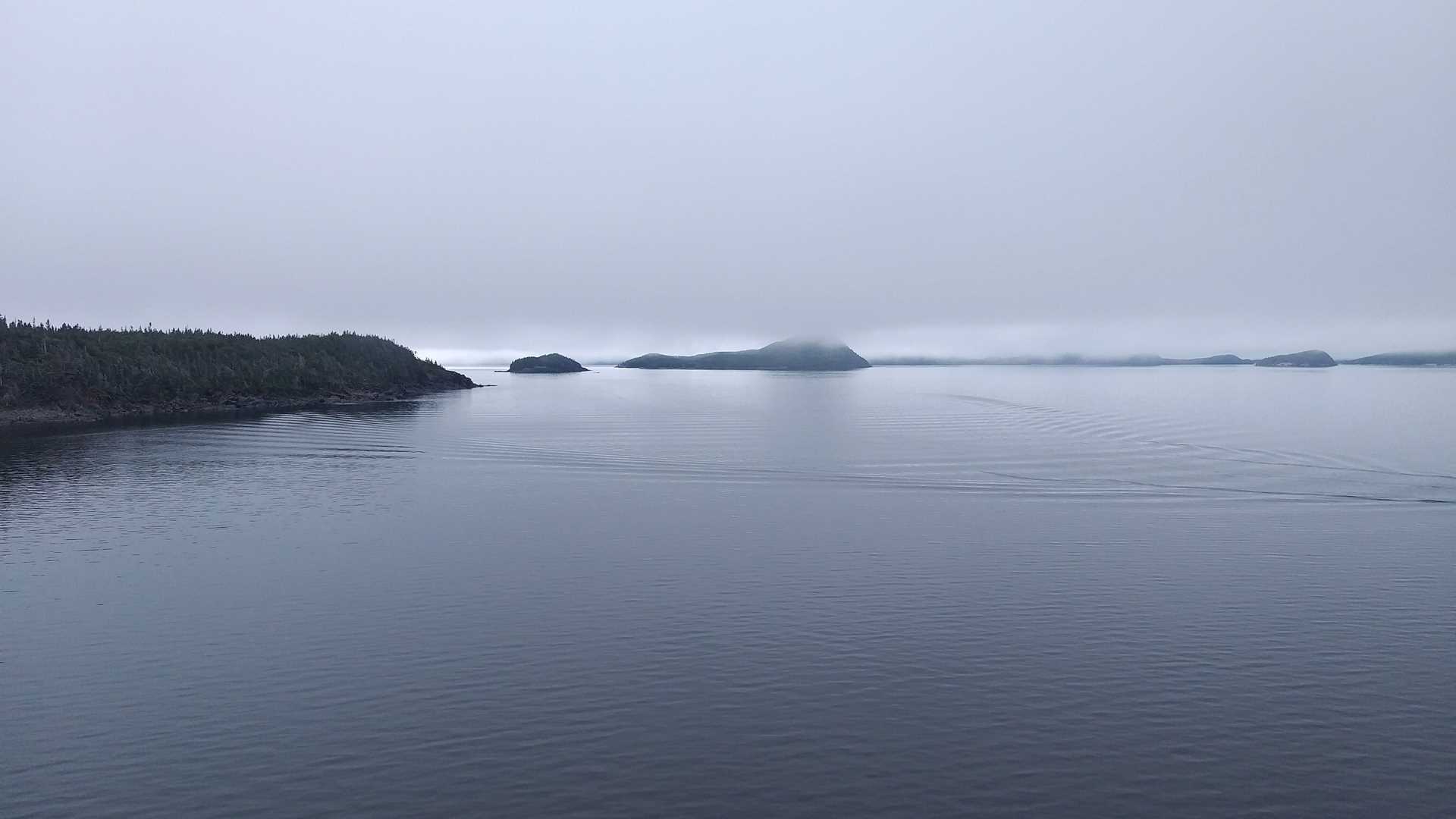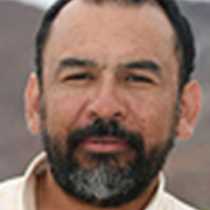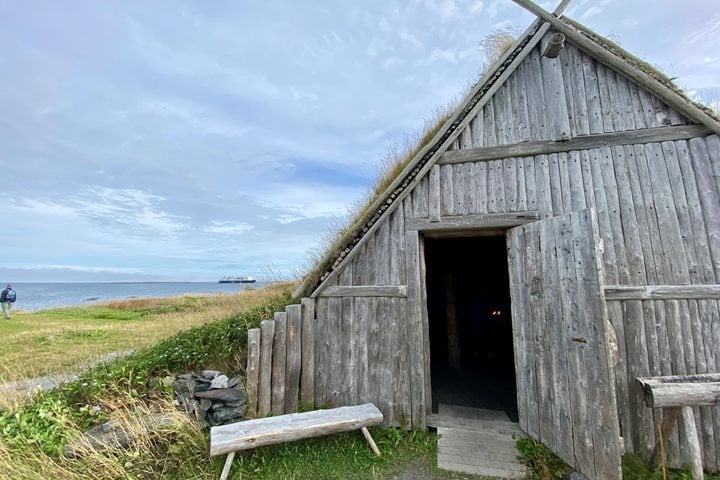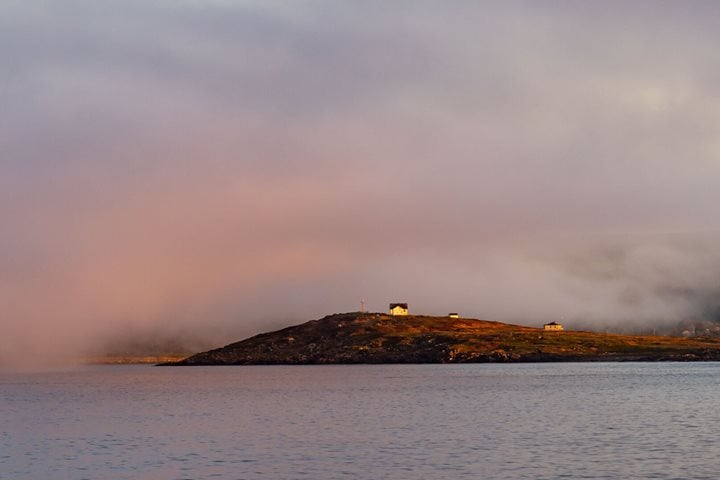A calm navigation last night brought National Geographic Explorer to Notre Dame Bay, which is part of the long and contorted Newfoundland’s northern littoral. This area is extraordinary in many senses. It is dotted with dozens of small and medium-sized islands where the boreal forest meets the sea. There is great marine productivity, and fishing of lobster and other marine creatures is a very important activity. The sea freezes during the winter, allowing residents to see polar bears hunting on the fast ice and wolves and coyotes crossing from Labrador to Newfoundland on ice bridges. The area has had over fifteen giant squid wrecks on beaches or in the water. Finally, at the northeast corner lies Funk Island, a small rookery where the famous and sadly vanished great auk had its main breeding grounds.
We spent the morning on Zodiac cruises around Knights Island, Notre Dame Bay with the hope of finding some of its magnificent inhabitants. In addition to numerous gulls of at least two species and ruddy turnstones, we observed a bald eagle majestically flying above the balsam firs, birches, and spruces that form the dense, insular forests throughout the archipelago. The geology was spectacular, corresponding to the Dunnage Zone, a geological province composed of sediments, crust, mantle, and seafloor mineralization of the long-gone Iapetus Ocean. Big slabs of metamorphic and sedimentary rocks faulted, folded, and eroded, showing the great tectonic events that shaped Newfoundland Island. Later in the afternoon, we enjoyed a westbound navigation in a calm and very blue ocean. I keep high my hope of finding the floating carcass of a giant squid…you never know.







